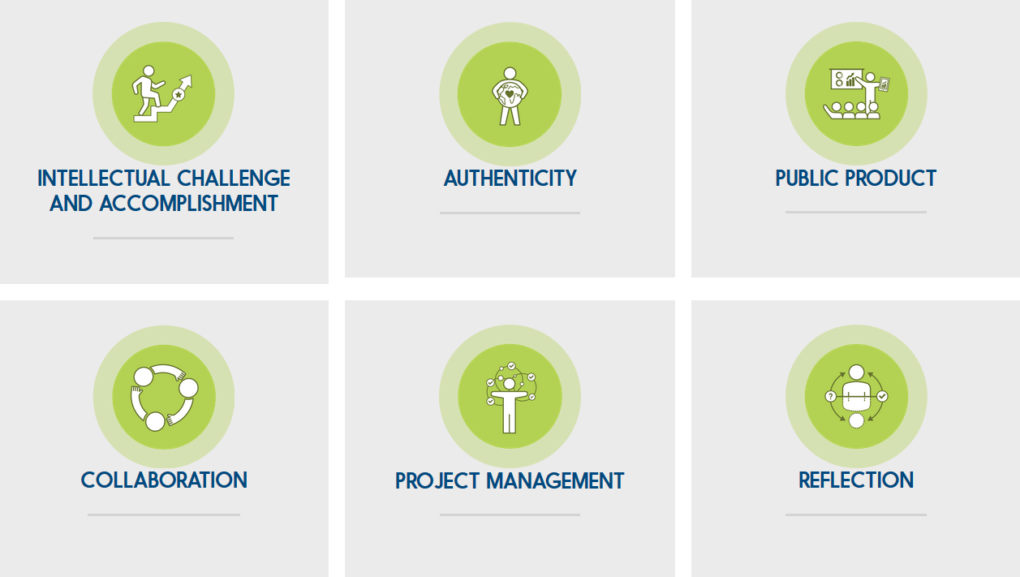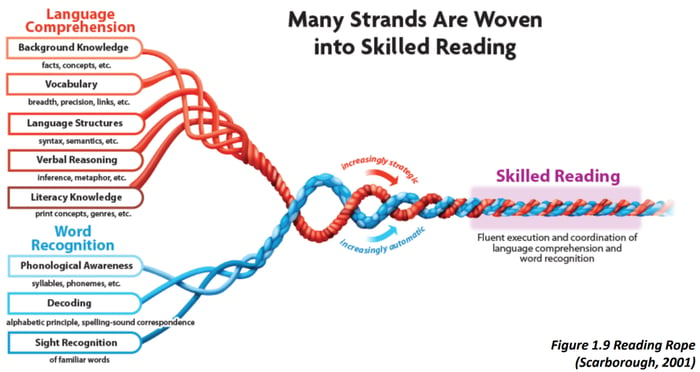This is the first in a series of three blogs focused on Equitable Literacy Instruction supported through Defined Learning and Project Based Learning processes.
Advancements in brain science have provided a fresh look at instructional choices that build literacy skills and learning for students at all grade levels. More than ever before, teachers have access to the why and how behind student learning, and these insights have prompted shifts in practice, particularly with regard to improving literacy skills: reading, writing, listening, and speaking (Oakley, Rogowsky & Sejnowski, 2021).
It’s hard to ignore the value and importance of reading and how it impacts just about everything we do. But there is also an emphasis on students’ ability to write, speak, and listen as schools focus on building college and career readiness skills. Equitable literacy instruction can be enhanced with Project Based Learning (PBL) and Defined Learning.
Equitable literacy instruction is focused on five research-based practices:
- Intentional Knowledge and Language Activation Across Disciplines
- Daily Work with Enabling Text
- Explicit Instruction in Research and Text-Based Disciplinary Writing
- Explicit and Systematic Instruction in the Function of Language
- Daily Work with Complex Text.
This post will highlight the alignment between two: Intentional Knowledge and Language Activation Across Disciplines and the Importance of Explicit and Systematic Instruction in the Function of Language, and how these foci can be reinforced through the use of Defined Careers and Defined Learning. If the goal of curriculum and instruction is to activate and expand student knowledge and language across content areas, when immersed in the project-based learning practices utilized through Defined, students will have the opportunity to deepen and develop both practices leading to increased comprehension.

Projects offered through Defined embed practice in reading, writing, listening, and speaking as students move through the steps receiving the valuable combination of direct instruction and opportunities for partnering with others and independent learning. In the midst of their creation of a wide swath of products (think brochures, audio and video newscasts, and multimedia presentations), students are making strong cognitive connections and building comprehension. An understanding of reading acquisition through the Scarborough’s Rope model (Scarborough, 2001) illustrates how vocabulary and background knowledge are key components of language comprehension and ultimately important pieces in building skilled, accurate, and fluent readers with strong comprehension.

Utilizing Defined Learning’s performance tasks creates a partnership that reinforces practice in communicating and skill-building with real-world and career-focused projects and problems. Through PBL design elements and practices, students spend time with educational resources, navigating through various lessons on their way to solving a problem. This structure is particularly helpful for at-risk populations and Multilingual Learners who can use opportunities for collaboration with peers as a way to practice their language skills in an engaging and authentic way.
When it comes to Explicit and Systematic Instruction in the Function of Language, the topics and purpose of Defined Learning and Defined Career tasks go a long way toward building student engagement and excitement around real-world connections. It is during this practice of solving problems and working together, that teachers can embed instruction requiring students to examine different audiences. Consider syntactical lessons (the way words are put together to form phrases or clauses) around the language used for a formal speech versus providing directions or telling a story. Perhaps grammar instruction could be included in a task that requires students to provide a written product.
In practice, this could look like a lesson paired with the grades 3-5 Creative Designer task. Where students are asked to create a sales promotion article and/or a sales pitch, the teacher could teach language usage for the varying audiences and purposes and how students might change their word choice accordingly. For older students, these skills can be reinforced through the HS ELA We’re Not So Different: Theater task. In this task, students write a cultural collaboration play script that represents multiple cultures and includes dialogue. Research supports the benefits of this close look at language usage for students with disabilities and multilingual learners.
As with any task, students are encouraged to have voice and choice throughout the process. This is where teachers can tap into student interests and experiences to truly enrich their learning and engagement. When it comes to teaching students with disabilities, the opportunity to provide voice and choice can lead to greater time on task, increased persistence when challenges arise, and a sense of pride for students who are able to show their learning in a way that best reflects their abilities.
Equitable Literacy Instruction highlights key components meant to provide a strong foundation for learners regardless of grade level. The next blog will focus on Daily Work with Complex Texts and Daily Work with Enabling Texts and how a cross-curricular focus on these areas can bolster experiences and learning for our most vulnerable students.
Please click the links below to view the other two blogs in this 3-part series on equitable literacy through a project-based learning lens:
About the Author:
Dr. Joy Carey has more than two decades of classroom experience teaching middle school English Language Arts in both rural Pennsylvania and Arlington, Virginia. She has also served as a literacy coach and currently enjoys teaching high school English in Baltimore County Public Schools. She is passionate about writing and building connections with students. Her research focuses on how PBL influences literacy skills for middle school English Learners. Always up for a challenge, Joy works on agility training with her Border Collies in her free time.